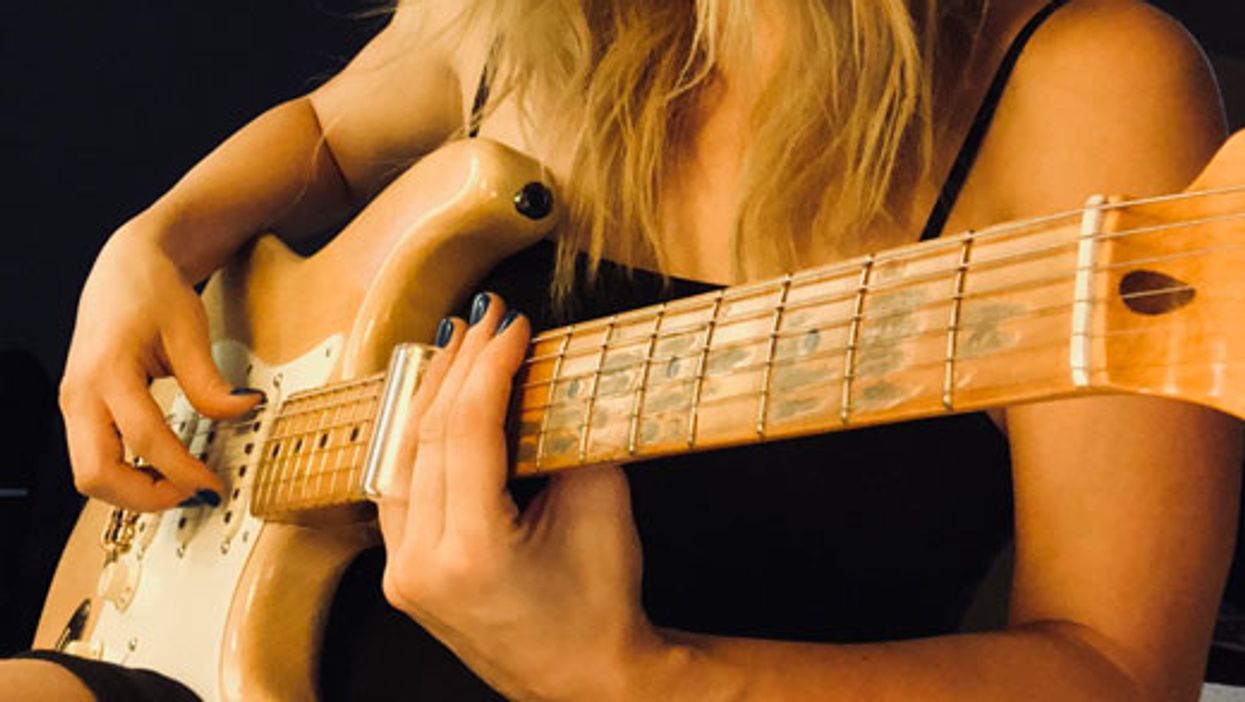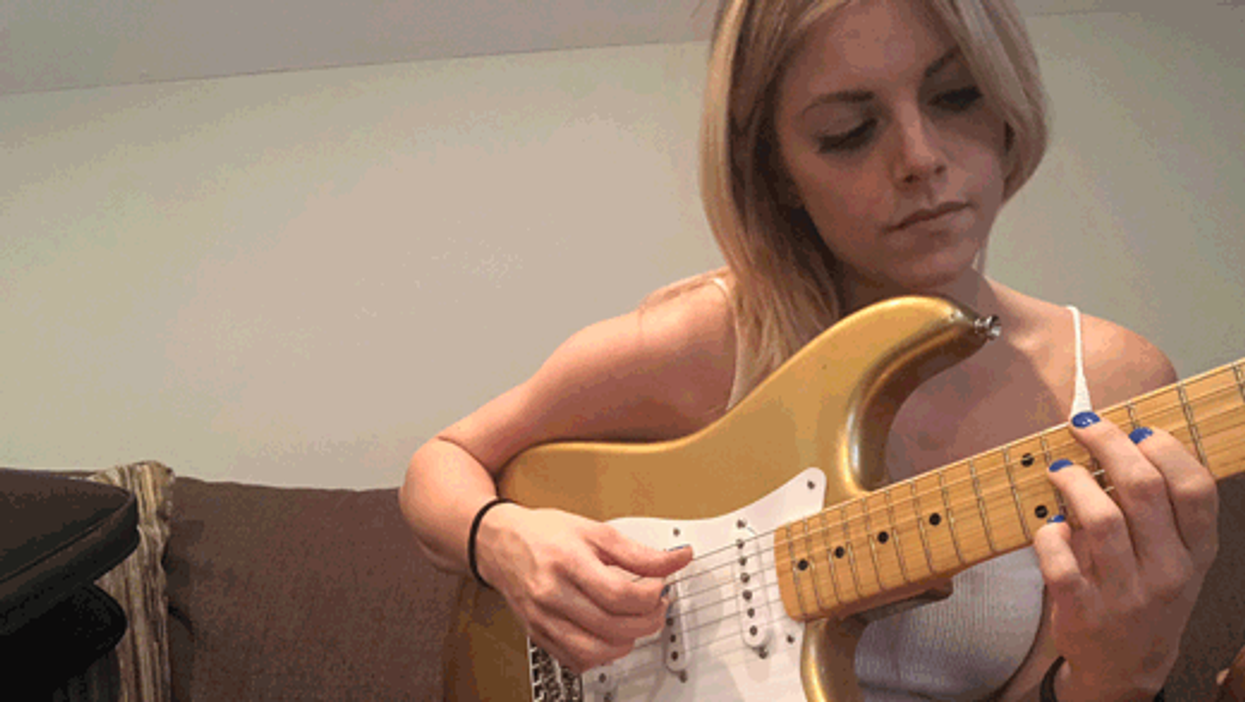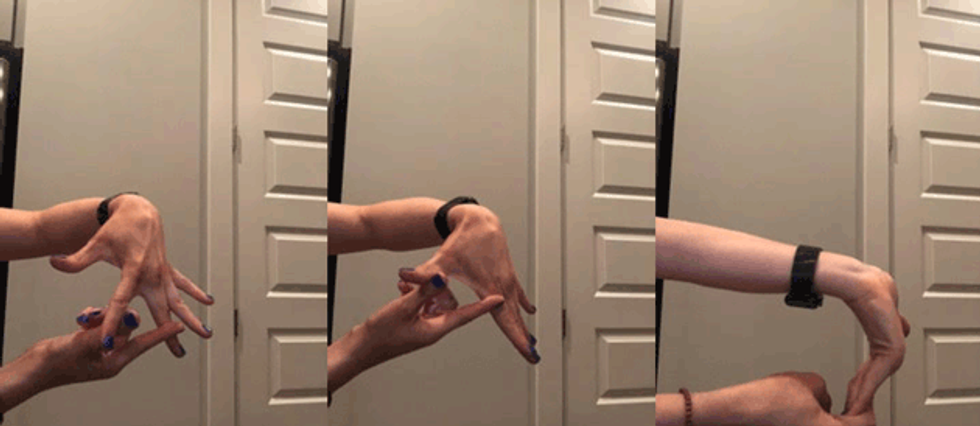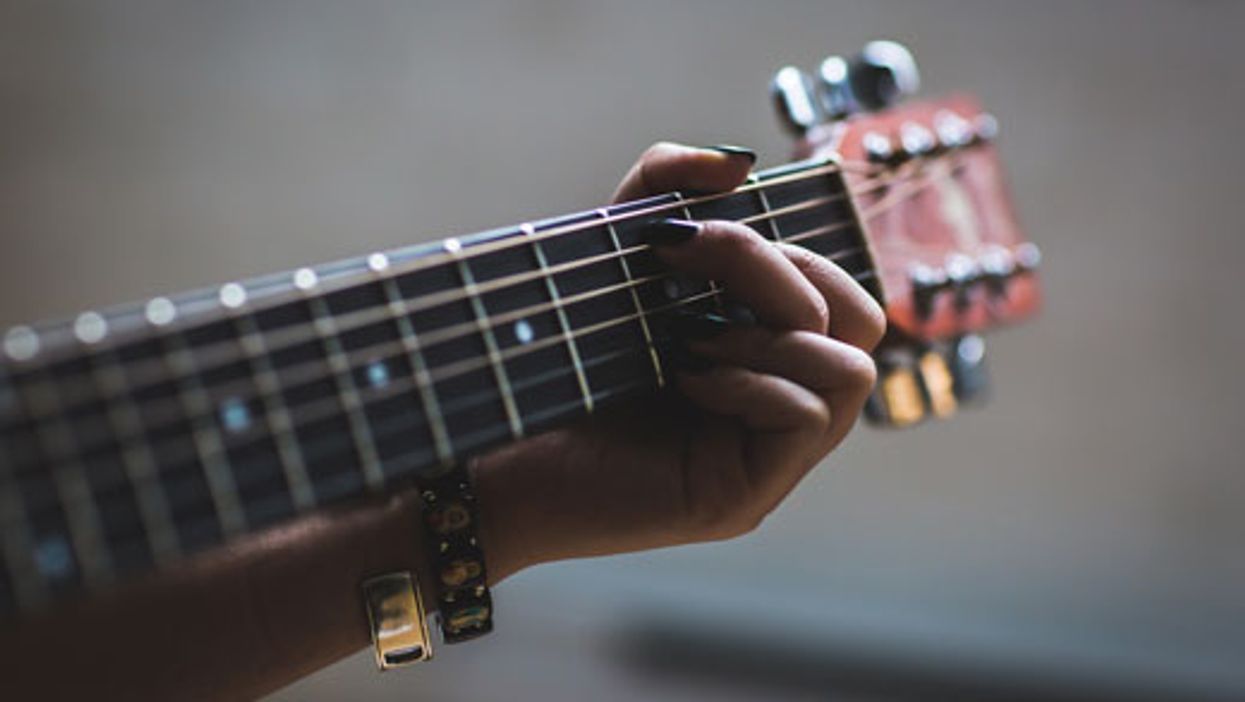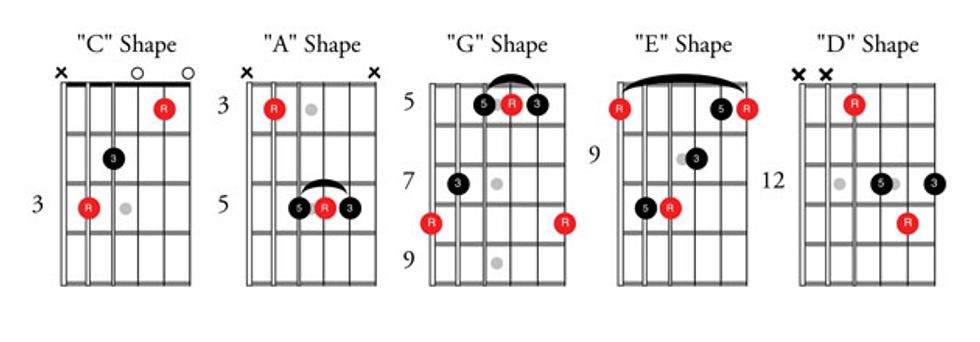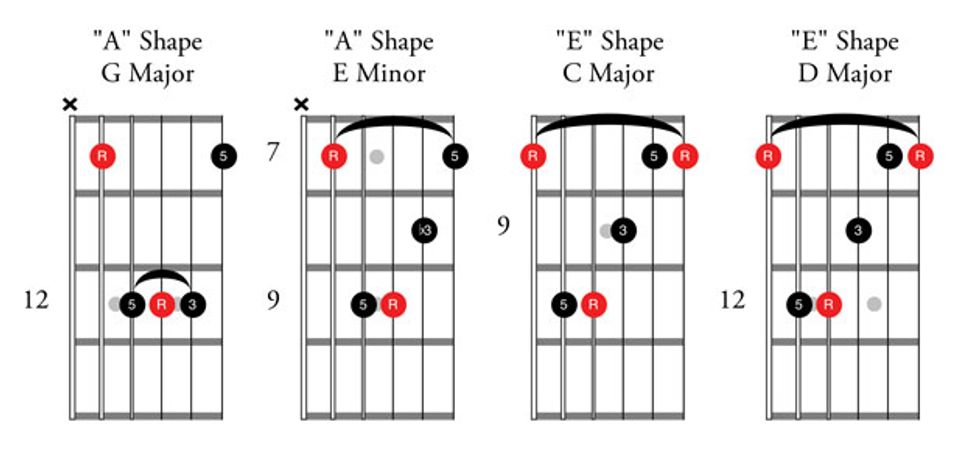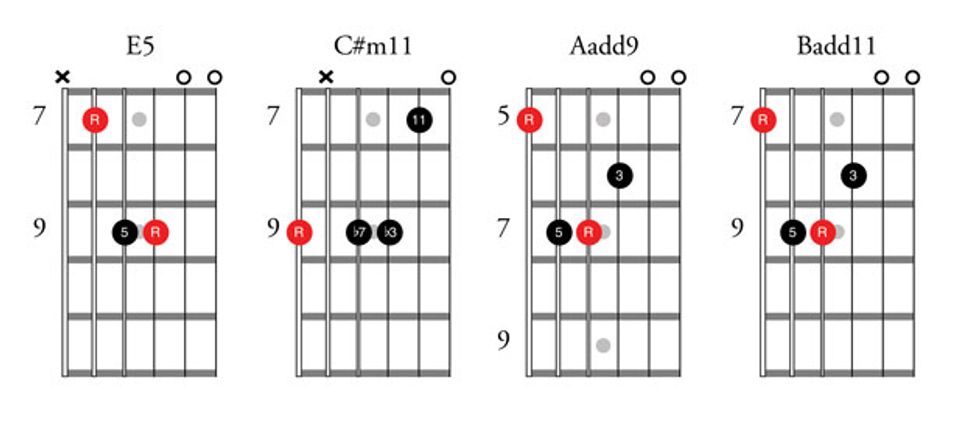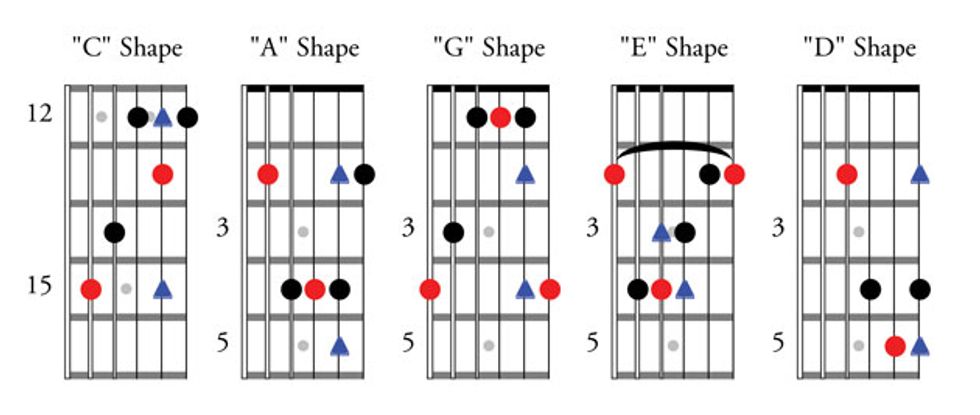"You just need to find your sound."
I've heard this so many times I've lost count. Living in Nashville for the past eight years has been great, but it can also be tough to find yourself in an environment like this. After signing my record deal, releasing a few singles, and working with amazing people, I felt so frustrated and confused when people would tell me I just hadn't found my identity yet. Basically, it comes down to: Who are you? What do you want to say and how you want to say it? I'm a songwriter, I'm a singer, I'm a guitarist, and I listen to many types of music. As an artist trying to find her "voice," these can be rough waters to navigate.
Enter Mr. Kristian Bush. About a year and a half ago, I had a meeting with the celebrated producer and multi-instrumentalist, and he asked me what my favorite album was. Without hesitation I said Continuumby John Mayer. I had listened to that album from front to back more than anything else.
"Perfect," he said. "I want you to record the whole thing." I stared at him blankly, not fully grasping the nature of my assignment. But it soon sank in: My homework was to re-record my favorite record of all time.
There were three rules for this homework assignment:
- I had to play every instrument on the record myself.
- I had to do it alone in my studio.
- I had two weeks to finish it.
Even though I didn't fully understand why Kristian asked me to do this, he's someone I completely trust, both in creativity and in life, so I cleared my schedule for the next two weeks and proceeded to work around the clock. I thought I knew the album pretty well after listening to it so much, but when you start to dissect Pino Palladino's bass lines and Steve Jordan's drum parts, and, of course, all the great guitar parts, you come to appreciate the music on a whole new level. When you're forced to put an album you love under a microscope and then recreate it in your own voice, magic happens.
I learned a lot through this homework assignment. There are parts I never knew were in each song until I recorded them. Getting inside the songs and really listening to each part instead of just learning something quickly by ear made me a better player.
For any John Mayer enthusiasts out there, please know this is just music. I'm not saying what I did was right or wrong, or anything but a mere interpretation of my version of the album. I recorded these files in August 2016, and even listening back to it now there are a hundred things I'd change. But that's the beauty of music—the fluidity keeps us coming back for more. There is always a frustration, at least for me, in finding the right guitar tone. It's a good kind of frustration, but an ever-going battle nonetheless. So let's dive into a few things I learned on this journey.
Disclaimer: There was one thing I fought Kristian on, but now I'm happy he suggested it. He muted all my drum tracks. At first I was frustrated because learning how to program a mere two bars of Steve Jordan's playing could take me several hours. In the end, however, recording this album became so much more about a process of discovering my own identity that I didn't want it to seem like a complete "cover project." John's version of Continuum is as good as it will ever get. We wanted this to have its own voice, coming from a completely different perspective. The lack of drums seemed to take off any "clothes" covering up what I wanted to show.
“Waiting on the World to Change"
As a guitar player, melody is key, and this solo is so simple and memorable at the same time. You don't need to play a barrage of 16th-notes in an eight-measure solo. This is a solo you can sing along with and this song reinforced the importance of simplicity. It's actually harder to play and write simple guitar parts. My favorite guitarists play melodically, and John is definitely one who understands the value of that.
I used a Fender American Standard Strat with Fat '50s pickups. Because these pickups don't have the underwound mid-scoop of John's signature Big Dipper pickups, they sound a lot fuller. I love the distinctiveness of an underwound pickup, but I usually put them through some EQ like an MXR 10-band EQ pedal that boosts the mids. I like being able to shape that midrange for each song.
Lindsay Ell - I Don’t Trust Myself (With Loving You) [Official Video]
This is probably my favorite track on my version of Continuum. I'm drawn to filter and wah effects—a lot. The pulse of this song has so much angst in it until it releases at the first guitar solo. I believe John used a Roger Linn Adrenalinn III on the original, but you can get close with an auto wah. I wanted to try to create something similar with separate effects. For the main guitar part, I used a Diamond Tremolo pedal, a touch of compression, and an Electro-Harmonix Q-Tron. Once the part was recorded, I ran it through another envelope filter in Logic. For the second guitar I used one of my favorite overdrive pedals—an Ibanez TS808 Tube Screamer.
Lindsay Ell - Belief (Official Audio)
For the purists out there, here's my stance on the amp profiler debate. There are advantages and disadvantages to both sides. Is a "fake" amp ever like the real thing? No. But are there instances where this technology can make sense and still get close to the sound you're looking for while giving you additional options? Absolutely. Budget, travel, fly dates, or even your neighbor's noise tolerance can put digital solutions in a brighter light. Admittedly, you don't have air moving and you don't get the same sustain, but in the studio, those aren't as big issues as they can be live.
Do I use real amps onstage? Yes. But sometimes when I'm looking for a specific tone in the studio, amp profiling can help me shape that without buying an arsenal of 50 amps. Since I don't have the Two-Rock or Dumble I want, amp profiling fills that gap—for now. I believe that the sonic character of distorted breakup comes from your amp, and the shape of your tone comes from your speaker. In a profiling world, you're able to match any speaker to any amp you choose. You can, of course, do this in real life. But I can audition 10 different speakers with the same head at the touch of a button.
I've played through a Kemper and a Fractal Axe-FX and I'm a fan of both devices. The Kemper makes it easier for me to dial in a sound, but the Fractal has more flexibility to change every single aspect of your rig—right down to an impulse response. When I was recording this album, I had a Kemper in my studio, so I was able to find a lot of different amp sounds. I was actually surprised at how responsive the presets were, and how much it reacted like a real Two-Rock. Two-Rocks to me have a lot of headroom, and they keep that really nice high end when you finally find your sweet spot.
For the solo on "Belief," I used my Custom Shop Fender Strat '56 reissue along with a Fulltone Full-Drive 2 and a Klon KTR. This is one of my favorite solos on John's record—especially when he extends it live. For my purposes, I stuck to the recorded version, but his attack on each note is what makes this solo special to me, so was something I really focused on. It adds an aggression to each note and really makes the solo speak.
Lindsay Ell - Gravity (Official Audio)
The delicate nature of this track is what makes it so beautiful. I wanted to approach the guitars slightly differently, so I used my neck pickup a lot. It has a throaty, warmer, fatter quality. When mixing the album, Kristian decided to keep a few seconds of digital peaking at the beginning of the guitar part on the song's head. It's how I actually dialed it in. There were passes without it, but it felt more human to keep it in than take it out, and that's what this project was about from the outset. So when you hear a peaking guitar at the beginning, it was intentional.
For the guitar tone on this, I used the Two-Rock Signature preset on the Kemper. I also used quite a bit of reverb from both the Kemper and an Electro-Harmonix Holy Grail pedal. For the solo, I used my Klon KTR. A side note: I remember shopping for a silver horsey Klon eight years ago and thinking that $600 was a lot to spend on an overdrive pedal. Well, it was ... and now they are more than double that. Well worth it, I will say.
Lindsay Ell - The Heart of Life (Official Audio)
This 4/4 blues shuffle is so endearing, and when I recorded it with drums, everything rests on that groove. However, when you mute the drums, the rhythm guitar is now your new percussion instrument. It's what propels this track.
I used a Dumble Overdrive Special preset in the Kemper for both guitars, but kept it really clean. In addition to using my Fender Strat for the solo, I played a Guild Starfire for the rhythm parts. While mixing this song, Kristian's engineer Tom Tapley reamped the guitars through an old Fender Deluxe Reverb. We also ended up putting some vocal reverbs on the lead guitar to give it a thicker sound and widen the guitar in the mix. Tom is a genius.
Vultures
This is one of my favorite songs to play live. I remember the first time I heard John play this lick ... I was caught. For these parts, we played around a lot with panning. Not having drums on this track was a huge part of the groove, so separating the guitar tones on each side helped me feel the full stereo effect of what's going on.
I used my Custom Shop Strat on this too, along with the Dumble Overdrive preset in the Kemper. We ended up reversing some of the lead guitar parts in the solo behind the actual lead part. This yields a really cool, spacey effect that complements the reverb you hear on the guitar itself.
Lindsay Ell - Stop This Train (Official Audio)
This was the only song we released ahead of The Continuum Project album. It originally came out on my March 2017 EP, Worth the Wait. Lyrically, this is such a special song to me. I remember when recording each piece of this song, everything just seemed to fall into place. There is a healthy amount of reverb on the vocal and acoustics. I ended up adding a ganjo, which helped fill the hole left by the lack of drums, and I even put a rain stick in the background—it just seemed to fit.
Slow Dancing in a Burning Room VISUAL - What the Ell?
This is my favorite song off of Continuum. I have been covering it for years, but this was one of the hardest songs for me to record. I couldn't get the guitars to sit right. I went through so many tones in the Kemper. I tried a Two-Rock, a Matchless, a Vox AC30, and a Dr. Z Z-Wreck, but ended up landing back at a Two-Rock Studio Pro for both guitars at the beginning of the song.
The lead guitar is my Custom Shop Fender Strat through the Dumble Overdrive Special preset. The second lead guitar is through my Fender Deluxe Reverb with a Klon KTR, an Xotic EP Booster, and a Timmy pedal, stacked with a bunch of compression. I love gain staging and do it quite often live. Sometimes I leave a clean boost like the EP Booster on all the time.
Lindsay Ell - Bold As Love (Official Audio)
I've always been a fan of this Hendrix song, but loved how John's version took it to complete different perspective. I will say, it pays to learn long guitar solos from players who you look up to. It teaches you things about your playing that you can't get to in shorter solos. After listening to Hendrix's solo on the original and then learning John's solo, it's such a master class in phrasing. It was definitely the hardest solo on the whole record to get right, from the dynamics of where this solo goes, to the timing of when John really gets into it. My favorite parts of John's playing are when he plays within chord changes as well as floating melodies between major and minor sounds.
In the mixing process, Tom Tapley reamped this guitar through an Ampeg B-15, which gives it that wider, thicker tone. That combined with the heavy reverb on the vocal helped balance out this track. In the solo, I'm stacking a Fulltone Full-Drive 2 with my Xotic BB Preamp. I don't hear a lot of guitar players talk about the BB, but I think for higher-gain solos, it's a little secret weapon to throw in the mix.
Lindsay Ell - Dreaming With A Broken Heart
There is something about the vulnerability of recording this song with an actual broken heart that helped me get the right emotion across. I recorded this song using my American Standard Strat through the Two-Rock Studio Pro preset with an MXR M300 Reverb. It's a good device with six distinctive reverb options, but I typically use the spring option.
Let's talk about delay pedals for a moment. The tried-and-true Boss DD-7 is something I consistently come back to because it has a pretty good modulated analog delay emulation. Whenever I run my chain through the DD-7, I feel it delivers a bit of compression. While I actually like how it colors my tone, sometimes it changes the sound too much. The Dunlop EP103 Echoplex is another one of my go-to delay pedals. I used it on this track for a warm, modulated tape echo effect. Also, I feel like I need to mention the Strymon TimeLine. Although I didn't use it on this song, it's an incredible delay pedal with tap tempo and a seemingly endless amount of settings.
Lindsay Ell - In Repair
I love all the sections in this song. One of my favorite things about John's songwriting is how he may shift to a completely different headspace as the song unfolds. The guitars on the back half were so much fun to record. This song taught me a lot about stacking guitar parts, for sure. How you bring them to a crescendo is all about the arrangement, dynamics, and tones you use.
The guitar at the top of the song is my American Standard Strat with a slightly overdriven tremolo, which I got using the Diamond Tremolo enhanced with some reverb from the MXR M300. I believe John recorded the organ part using an overdriven Electro-Harmonix POG. I played that part on keys because I wanted it to be slightly different, and it let me explore how I could shape the sound. There is a throat to the voice of an organ that I feel a POG doesn't deliver in the same way. There are sections where we took that organ part, put on some delays, and then only took the delay part of the chain and laid it in the background of the mix.
Lindsay Ell - I'm Gonna Find Another You (Official Audio)
This was a fun song to record. To me, it sounds like John played something like an ES-335 on the original, which is a complex and warm guitar. I played my Gretsch G6115T-LTD15 Center Block "Red Betty" and reamped it through a Deluxe Reverb. I also doubled the guitars in the chorus and panned them.
So there you have it. I will say that after recording Continuum, I approach music differently. I reached a place of vulnerability through this assignment that I knew I had in me but was never able to tap into before. Music doesn't always go to that delicate and personal place like John went to on this record. So, whatever it may be, listen to music that inspires you to a level like this. It will teach you how to listen.
Thanks to Kristian Bush for asking me to record my version of my favorite record, and thanks John Mayer for recording Continuum. It still remains my favorite record, and I'm a better artist because of it.


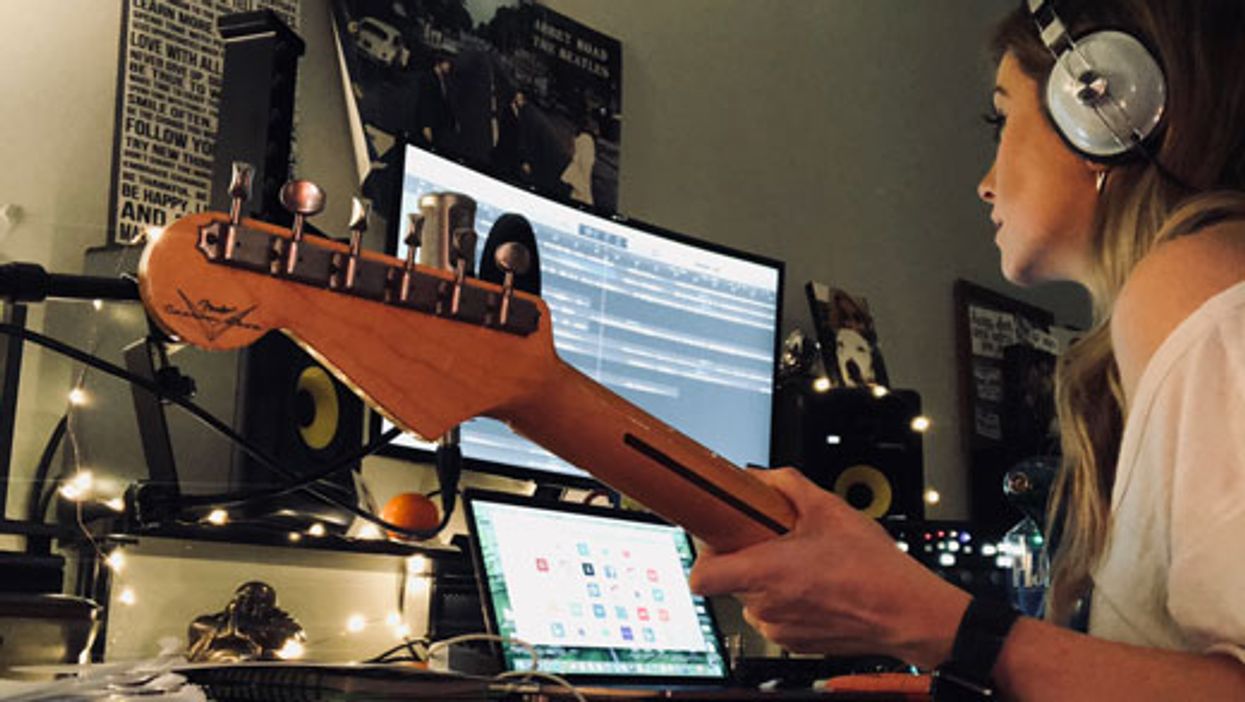

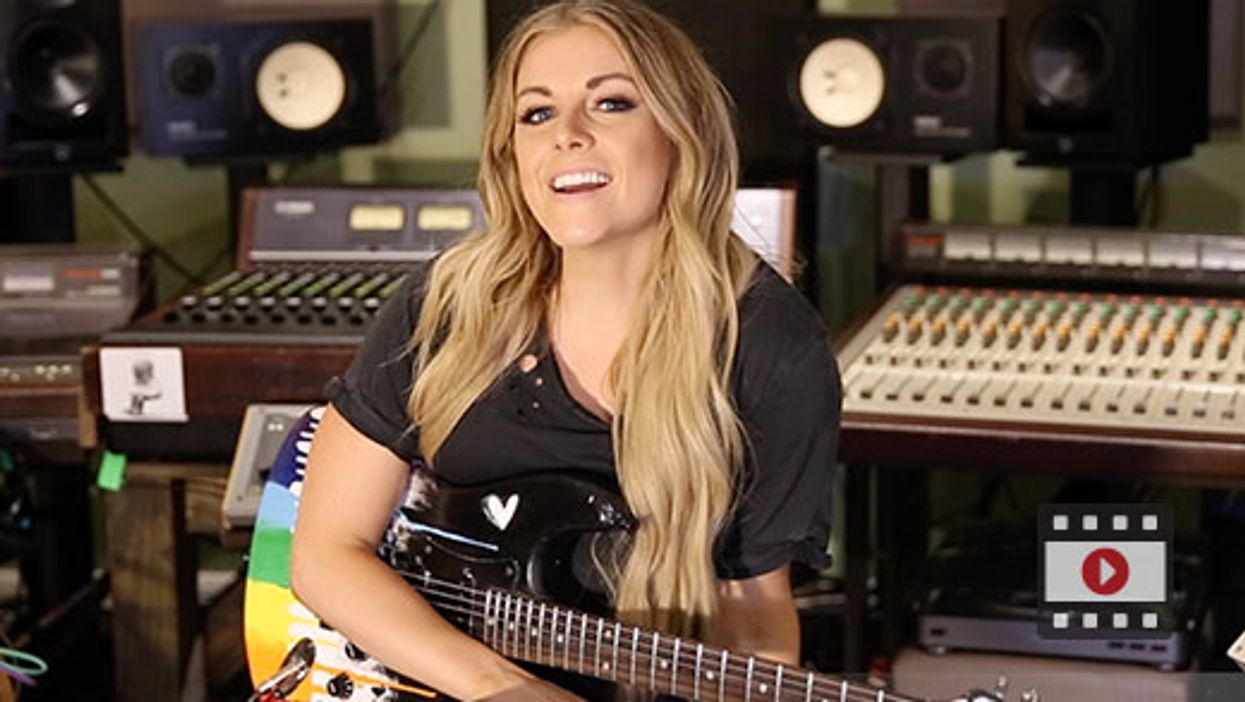
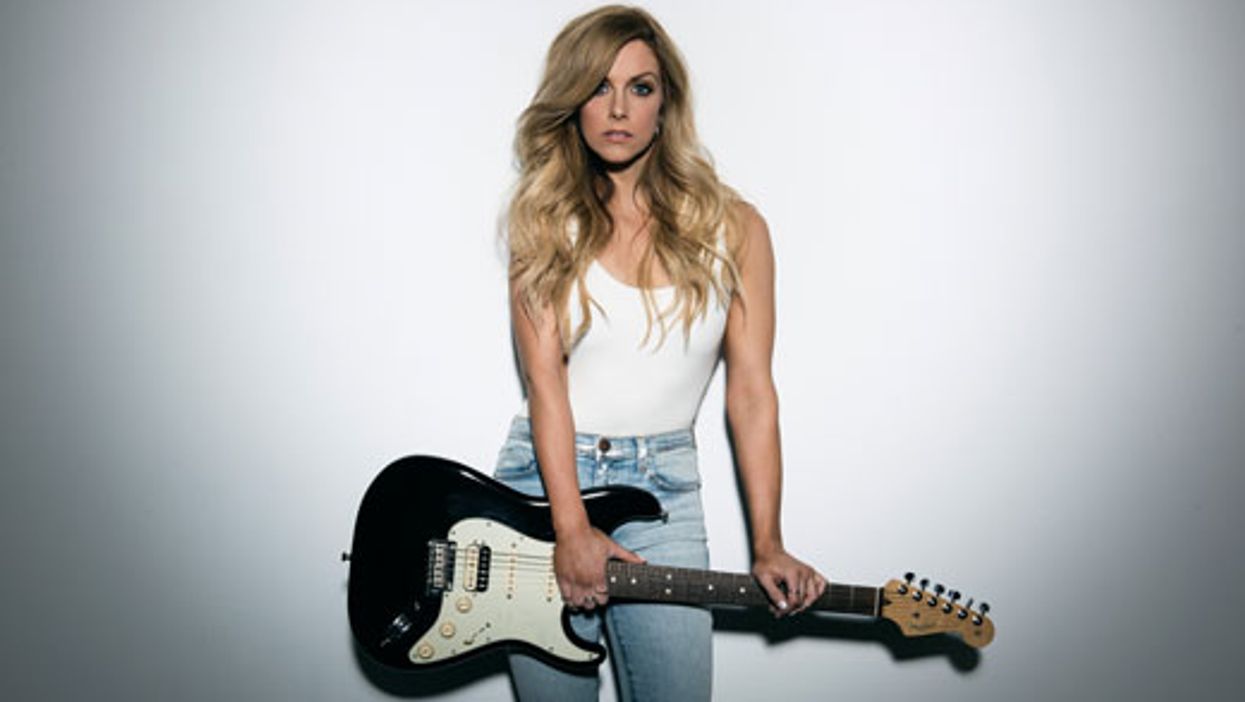
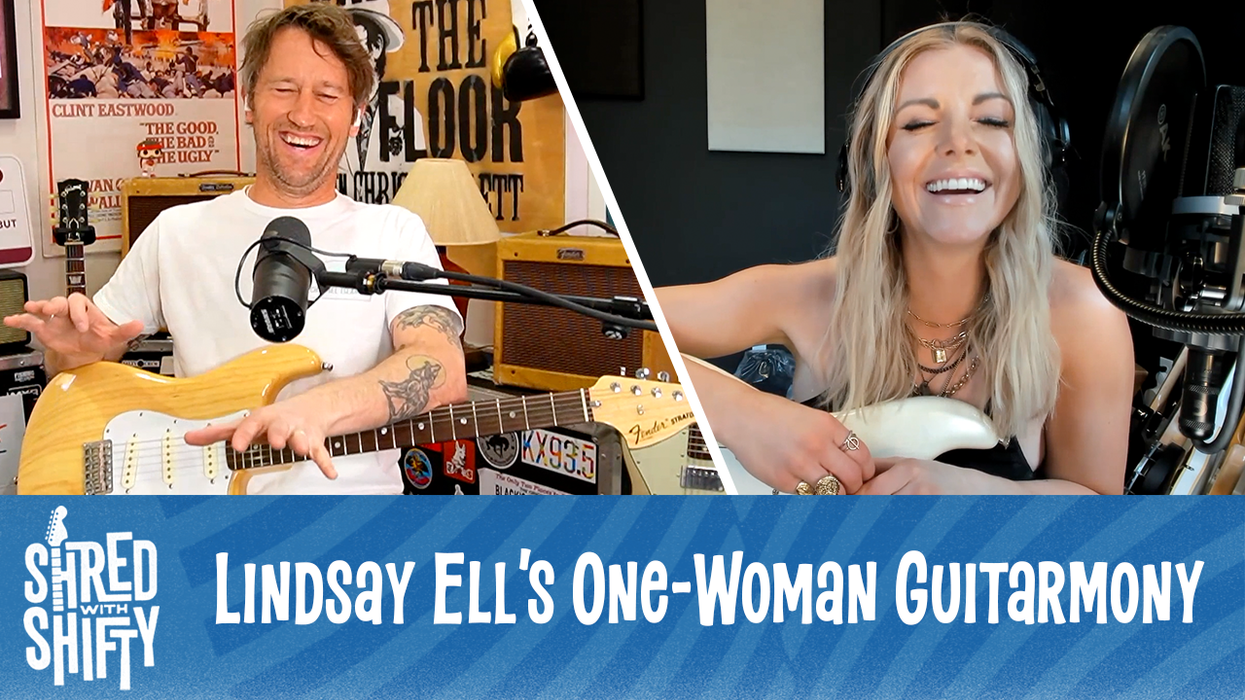
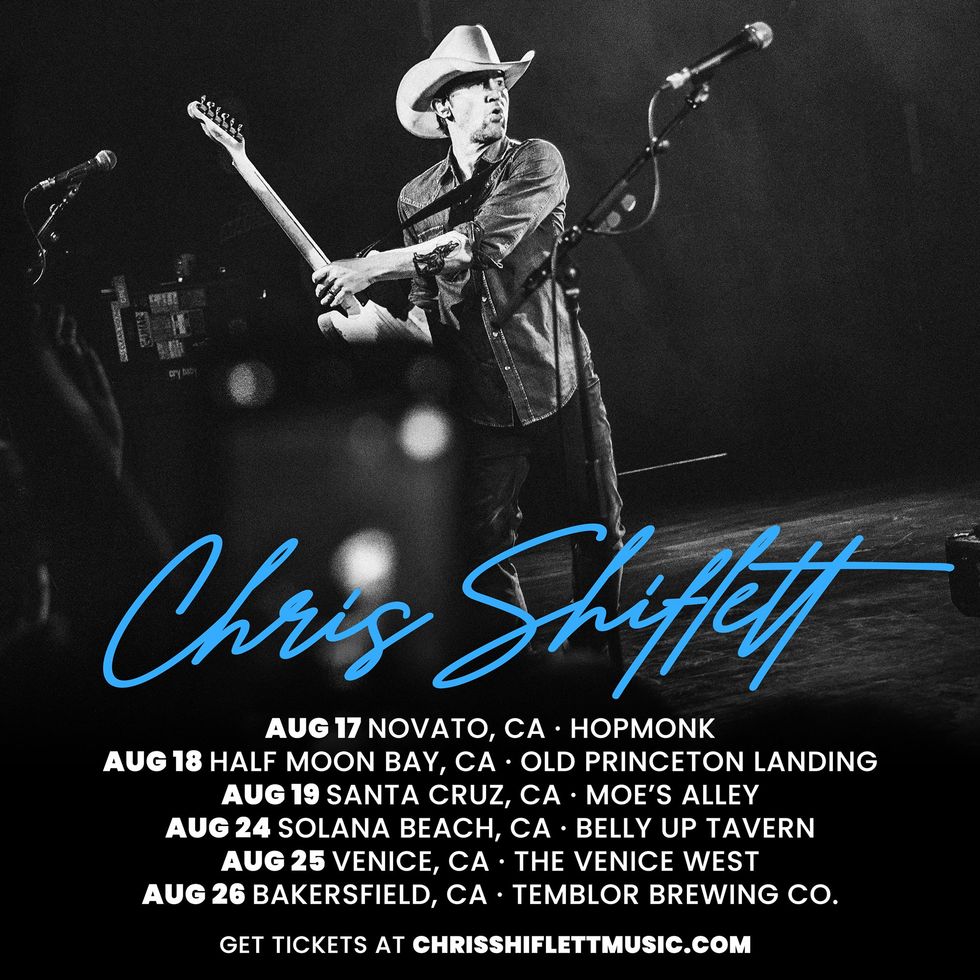



![Rig Rundown: Russian Circles’ Mike Sullivan [2025]](https://www.premierguitar.com/media-library/youtube.jpg?id=62303631&width=1245&height=700&quality=70&coordinates=0%2C0%2C0%2C0)


